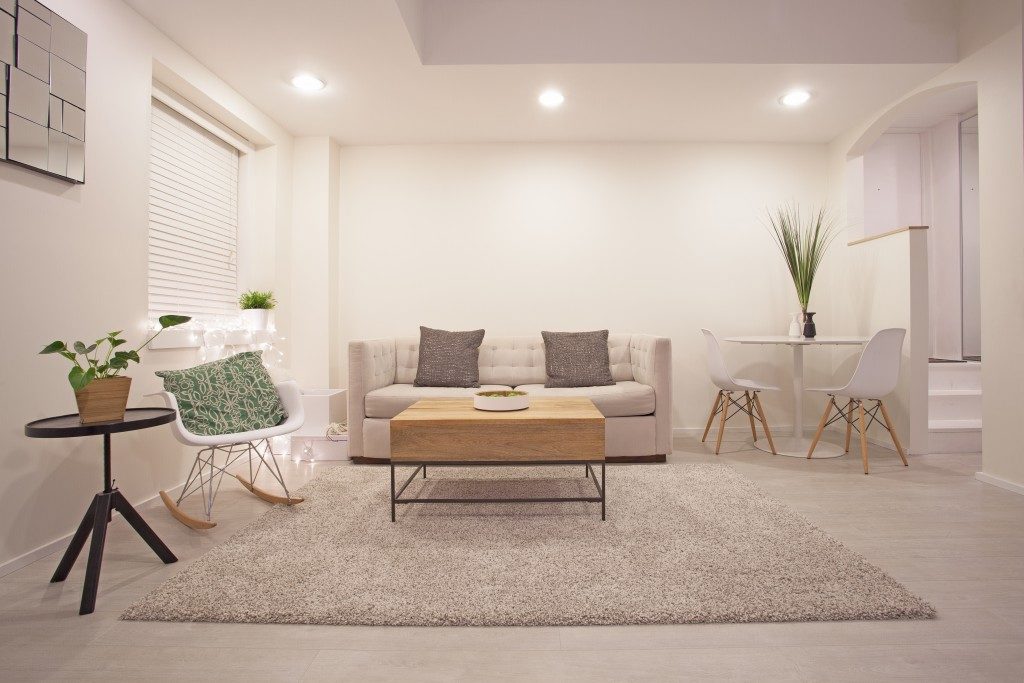For many families, deciding whether to buy an existing home or build one from the ground up is one of the most significant decisions they’ll ever make. It’s not simply a question of preference, but one that involves financial considerations, lifestyle goals, long-term plans, and even the emotional connection people have with their homes. This is the essence of our guide to deciding whether to build or buy a home, a crossroads that requires thoughtful reflection and informed decision-making.
We look at essential considerations for those leaning toward buying, such as the steps every smart buyer should take and what to expect when purchasing an existing house. And for those inclined to build, we touch on working with architecture and design professionals to ensure a smooth process from blueprint to move-in. Expert input can greatly influence outcomes.
Every section below ties back to the core debate: build it or buy it. No matter where you are in the journey — dreaming, browsing, budgeting, or breaking ground — the information that follows is designed to guide families toward making a confident, well-informed choice that suits their needs now and in the future.
1. Package Deal or Not?
Choosing a bundled home and land package can seem like a shortcut to homeownership. These deals often present an affordable, straightforward pathway that minimizes many of the logistical hassles families encounter when building from scratch. Builders typically offer standardized floor plans and design options, which streamlines the process and reduces decision fatigue.
Specifically, a house and land package appeals to buyers who want the benefits of new construction without the stress of sourcing land and coordinating with multiple contractors. Since the builder controls both the house and the land, it’s easier to predict costs and timelines. This can be ideal for first-time homebuyers or busy families looking for simplicity.
However, when considering whether to build it or buy it, it’s important to realize that package deals come with limitations. Customization is usually minimal, and these developments are often located on the city outskirts, which may not suit everyone. Balancing affordability, convenience, and location is crucial to determining if this route serves your family’s long-term interests.
2. Pre-Owned Pitfalls

Buying a pre-owned home offers families the chance to move in quickly, settle into an established neighborhood, and avoid the hassle of construction timelines. Many older homes also come with character, mature landscaping, and often lower initial costs compared to building from the ground up. It’s a route that appeals to those eager to get on with life.
That said, purchasing a house for sale can open the door to unexpected challenges. These may include outdated plumbing, inefficient insulation, or hidden structural damage. Even thorough inspections can’t always catch every issue, which may lead to additional costs and renovations shortly after moving in.
So when asking yourself if you should build it or buy it, weigh the trade-offs. While buying may offer speed and charm, building ensures a home tailored to your family’s specific needs. Understanding the risks of pre-owned homes can help families make a more confident decision.
3. Market Moves Today
The state of the real estate market significantly impacts whether building or buying makes more financial sense. In a seller’s market, where inventory is low and demand is high, prices for existing homes may skyrocket, making building a more appealing alternative. Conversely, in a buyer’s market, deals on existing homes become more accessible and tempting.
Real estate conditions also influence mortgage rates, land availability, and the cost of construction labor. If new developments are booming in your area, land prices may surge. Alternatively, a slow market could mean better deals on both existing properties and construction materials.
Factoring in the housing climate helps clarify whether to build it or buy it. Watching interest rates, supply trends, and neighborhood growth projections can position your family for the best financial outcome over time.
4. Material Cost Impact

Material prices, especially for wood, are a major factor in the cost of building a new home. Lumber services fluctuate with supply chain disruptions, tariffs, and natural events like wildfires. When prices spike, building from scratch becomes more expensive — sometimes prohibitively so for families on a tight budget.
By contrast, buying an existing home avoids many of these raw material cost concerns. Builders absorb the impact of lumber costs in packaged deals or pass it on in new construction bids. Understanding how these prices move gives families an advantage in choosing their route.
When evaluating whether to build it or buy it, lumber services deserve close attention. A modest increase in lumber costs can add tens of thousands of dollars to a new build. Staying informed about material markets can help families time their decisions better.
5. Builder or Buyer?
One of the most personalized paths to homeownership involves working with a custom home building contractor. These professionals bring your vision to life from blueprint to final touches, offering the opportunity to design a home that reflects your family’s lifestyle, values, and future needs.
A custom home building contractor provides more than just construction expertise—they coordinate zoning, secure permits, oversee subcontractors, and ensure everything aligns with your budget and timeline. This makes the process more manageable, though still demanding.
Still, the decision to build it or buy it hinges on your readiness for such an involved process. While building with a contractor offers flexibility and personalization, it also requires time, patience, and ongoing decision-making. Weigh this against the ease of buying a move-in-ready home.
6. Smart Buyer Steps

House buying isn’t just about finding a beautiful property; it’s a process that demands planning, research, and strategic thinking. For families considering purchasing an existing home, understanding the full buying journey is essential, from securing financing and getting pre-approved to hiring a real estate agent and conducting inspections.
Specifically, house buying requires evaluating neighborhoods, comparing schools, checking local amenities, and predicting future value. These steps ensure that your investment aligns with your family’s lifestyle and financial goals. Mistakes at this stage can lead to costly regrets, so having a step-by-step plan is crucial.
In the discussion of whether to build it or buy it, buyers who follow a thorough and thoughtful approach are more likely to feel satisfied with their purchase. Preparedness is key to mitigating surprises and maximizing long-term satisfaction.
7. Design Help Needed?
A home designed by an architect design firm can be uniquely tailored to reflect a family’s personality, routines, and plans. These firms bring a creative and professional touch that ensures functionality, aesthetic value, and harmony with the environment—all important considerations when building a home.
Partnering with an architect design firm means you’ll receive more than just a floor plan. You’ll benefit from an in-depth design process that covers everything from zoning requirements to site-specific layout advantages. It’s a collaborative approach that ensures the final product matches your expectations.
If you’re asking whether to build it or buy it, consider whether you value design control and personalization. An architectural firm may increase upfront costs, but for many families, the results justify the investment. You’re not just building a house—you’re shaping a future.
8. Land Picks That Last

Location has always been a key driver in real estate, and that’s especially true when selecting a site for new construction. Choosing a parcel of house and land that offers potential for growth, convenience, and comfort is vital for building a forever home.
Beyond aesthetics, the land you choose affects zoning regulations, utility access, property taxes, and resale value. Some lots may look perfect on the surface, but come with hidden restrictions or additional preparation costs like grading and tree removal.
In considering whether to build it or buy it, selecting the right land ensures your custom build won’t face unexpected hurdles. The right piece of land supports your vision and provides peace of mind for the long term.
9. Do You Need a Pro?
Building a home isn’t just a construction project—it’s a coordinated effort that involves technical design, functionality planning, and aesthetic judgment. Working with architecture and design firms offers families a chance to benefit from a team-based approach where engineers, designers, and project managers work in sync.
These firms help streamline complex decisions, making the experience less overwhelming. They can identify potential issues before construction begins, saving time and cost in the long run. This is especially valuable for families who want something beyond a cookie-cutter design.
Consider the support architecture and design firms offer. Their collaborative services may add to your upfront expenses but significantly reduce stress, delays, and design regrets. They will work with you to create the home of your dreams, with all the bells and whistles, without any of the hassle.
10. Which Path is Best?
The decision to build or buy comes down to your family’s goals, priorities, and lifestyle. Some families value the control and customization that come with building, while others appreciate the ease and immediacy of buying a home that’s already complete. Both paths intersect with the broader dynamics of real estate, personal finance, and emotional investment.
Real estate trends, interest rates, local zoning laws, and long-term neighborhood growth all play a role in which route will be best at a given time. What’s right for one family may be wrong for another—there’s no universal answer.
So, when faced with the dilemma of purchasing an existing home or starting from the ground up, the best path is the one that aligns with your values, timelines, and resources. With informed choices, expert guidance, and knowing the local inventory of real estate for sale, your family can confidently step into a home that truly feels like your own.
The decision to buy an existing home or build a brand-new one is never simple. It’s a personal, financial, and emotional journey that affects not only where your family lives but also how you live day to day. Throughout this guide, we have unpacked the major influences behind this life-altering choice.
From examining the appeal of house and land packages to understanding the risks tied to purchasing a pre-owned house for sale, every option carries weight. Real estate market conditions, fluctuating material costs from lumber services, and the role of a custom home building contractor all reveal how dynamic and layered this decision can be. Whether you’re leaning toward house buying or considering custom construction through an architect design firm, the choice reflects your family’s short- and long-term vision.
Selecting land, evaluating services from architecture and design firms, and accounting for every financial and emotional angle involved in this decision process all require thorough reflection. Some families may want something turnkey, ready to go; others crave a hands-on experience that begins with sketches and ends with keys in hand. There is no one-size-fits-all solution, which is why understanding the pros and cons of each path is so essential.
Whether you build it or buy it, the end goal is the same: creating a safe, comfortable, and fulfilling place to call home. Families that take time to explore each component—from budget to timeline, from customization to convenience—are more likely to find success and satisfaction in their final decision.
If you’re on the edge of this decision today, take comfort in knowing you’re not alone. Thousands of families wrestle with the same questions. Armed with the insights from this article, you can move forward with clarity and confidence. Buying a home or building one isn’t just a transaction—it’s the foundation for your family’s future. Choose the journey that aligns with your needs, and you’ll build more than a house—you’ll build a life.









